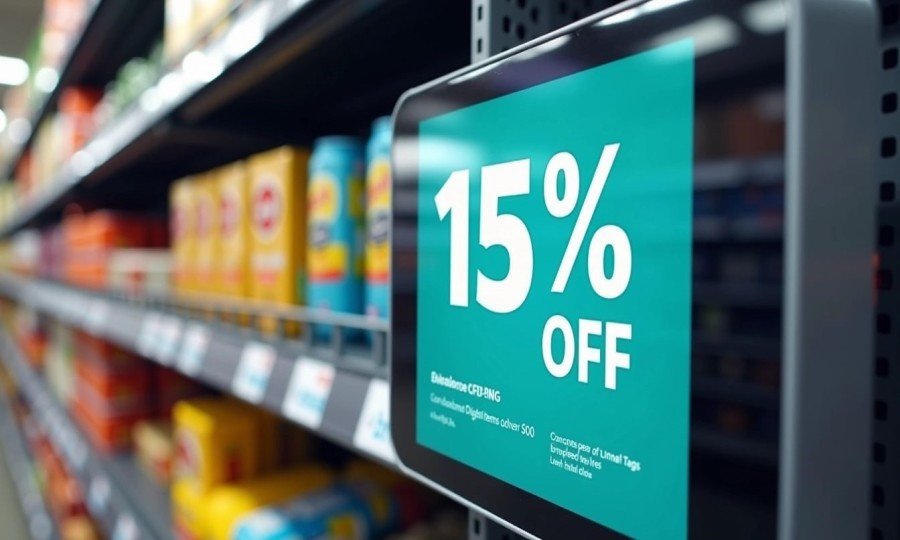My Cart (0 )
Poster Displays vs. Digital Signage: Choosing the Right Solution
- February 20, 2025
- Poster Displays
Marketing & advertising have evolved very significantly over the years. Businesses now have multiple ways to communicate their propositions and messages to customers.One of the most crucial choices they face is deciding between poster displays vs. digital signage. Both these options serve the same purpose – delivering the necessary information to the customers and promotions – but they differ largely in cost, functionality, and effectiveness.This blog will compare poster displays and digital signage, exploring their advantages, and limitations, as well as the best situations to use each of them.By the end, you will have a clear understanding of which of these solutions fits your business needs.
What Are Poster Displays?
Poster displays are a traditional form of printed advertising. They are prepared from materials such as vinyl, paper, or fabric and are available in different sizes.These posters are being placed in high-traffic areas to attract attention as well as convey messages.Common Uses of Poster Displays Businesses from various sectors and of different sizes use poster displays for various purposes, including:Retail stores – Showcasing sales, attractive discounts, or new product arrivals.Restaurants and cafes – Displaying the list of menus, special offers, or promotions.Exhibitions and Trade Shows – Promoting brands and services optimally by placing them at high-traffic spots within the retail environment.Movie theatres – They advertise their upcoming films with the help of poster displays.Corporate offices – Posters are often used to share safety guidelines or motivational quotes in the offices.Clinics & Hospitals – Providing health-related information to patients. Advantages of Poster Displays Cost-Effective – Printing posters are comparatively cheaper as compared to digital screens.Simple Installation – Posters are easy to put up without special tools or skills.No Power Required – Unlike digital signage, posters do not require electricity to function.Customizable – Businesses can design various posters for different locations.Works Perfectly Well for Outdoor Advertising – Poster displays can be placed anywhere, even in certain areas without any source of power. Limitations of Poster Displays Static Content – Posters do not change or move, making them less engaging when compared to digital screens.Difficult to Update – Updating a message generally requires replacing posters and reprinting.Vulnerability to Weather Conditions – Outdoor posters can end up getting damaged by wind, rain, or sunlight.Limited Visibility at Night – Posters do not have lighting and thus it makes them less effective in areas with low light.
What is Digital Signage?
Digital signage is an electronic display system that is instrumental in presenting information, advertisements, or promotions using screens. These screens can display images, animations, videos, or interactive content forms. Common Uses of Digital Signage Digital screens are being widely used in:Retail stores & shopping malls – Displaying periodic attractive discounts, promotions, & new arrivals.Transportation hubs & Airports – These are being widely used for advertising brands and providing travel updates.Corporate offices – The digital screens are being used for sharing safety information, company news, and announcements.Restaurants & Hotels – Digital signages play an instrumental role in displaying menu options, upcoming events, and offers.Clinics & Hospitals – Displaying health-related content as well as appointment schedules.Benefits of Digital Signage The most obvious benefits of digital signage are:High Engagement – Moving visuals attract more attention as compared to static posters.Easy Content Updates – Businesses can update promotions instantly without reprinting.Remote Management – Digital signage can be controlled from anywhere via software.Better ROI – Dynamic content can lead to higher sales as well as enhance brand awareness considerably.Versatile – A single digital signage screen can display several messages all through the day.Limitations of Digital Signage Higher Initial Cost – Digital screens, software, & installation can prove to be expensive.Requires Electricity – Digital signage necessarily needs a source of power, making it most unsuitable for every single location. It can only be placed where there is a continuous source of electricity.Higher Need for Maintenance – Screens may require frequent repairs, software updates, or troubleshooting.
Key Differences: Poster Displays vs. Digital Signage
To help businesses make an informed decision, here is a comparison of poster displays vs. digital signage.FeaturePoster DisplaysDigital SignageCostLowHighEngagementStaticDynamic & InteractiveUpdate ProcessRequires reprintingInstant updates via softwareInstallationSimpleRequires setup and softwarePower RequirementNo power neededNeeds electricityWeather ResistanceCan be damaged outdoorsIndoor screens are protected Why Choose Poster Displays? Poster displays are perfect when:You have a limited budget and need an affordable solution.Your business requires just one-time promotions that do not need frequent updates.You need a simple & easy-to-install signage solution.Your location does not have access to electricity for digital screens. Enhancing Poster Displays with Accessories Businesses can improve poster displays using high-quality accessories like:Aluminium Snap Frames – These are secure posters inside a durable frame, making them easy to replace.Aluminium Poster Hangers – These offer a very sleek and professional way to display posters in commercial spaces. When Should You Choose Digital Signage? Digital signage is indeed the best choice when:You want to capture maximum attention using videos and animations.Your business frequently updates promotions and needs a flexible display solution.You need a long-term investment with a strong return on investment (ROI).Your location guarantees a reliable power supply always during the operational hours of the digital signages. Trends in Digital Signage The booming digital signage industry is rapidly growing. As per Statista, the global digital signage market is projected to reach $31.7 billion by 2028.More and more businesses are presently using AI-driven displays, touchscreens, & cloud-based management systems in order to improve overall customer engagement. Combining Poster Displays and Digital Signage Some businesses benefit immensely from using both poster displays as well as digital signage depending on the nature of the purpose. Here is how they complement each other:Retail stores – Posters can very effectively highlight sales even inside aisles, while digital screens can display video promotions at the entrance or any other high-traffic area within the retail environment.Restaurants – Well-designed printed posters provide general schedules, while digital screens update visitors with real-time changes in events.By integrating both of these formats, businesses from various sectors and sizes can effectively maximize visibility and engagement.
A Detailed Cost Analysis: Poster Displays Vs. Digital Signage
Several businesses usually hesitate between choosing poster displays vs. digital signage due to concerns related to cost. Here is a rough breakdown of the cost:Initial Cost – The initial cost of poster displays is low whereas that of digital signage is high.Maintenance – The maintenance in the case of poster displays is minimal whereas digital signages require periodic software updates and repairs.Long-Term Investment – Posters have a limited timespan whereas digital signages can provide long-term savings on advertising.If you are planning short-term promotions, poster displays are surely a cheaper option. However, for long-term marketing, digital signage may offer the best value.
Conclusion
Choosing between poster display vs. digital signage depends on your business goals, marketing strategy, and budget.If you require a simple, cost-effective, and low-maintenance solution, poster displays are indeed the right choice that you can make.In case you want an engaging, flexible, and dynamic display system, digital signage is surely a better option to choose.Certain businesses can combine both solutions to create maximum impact.For high-quality poster displays, aluminium poster hangers, and aluminium snap frames, you may check out JS Displays. We offer the right blend of style, durability, and functionality for all business needs.
Read more



